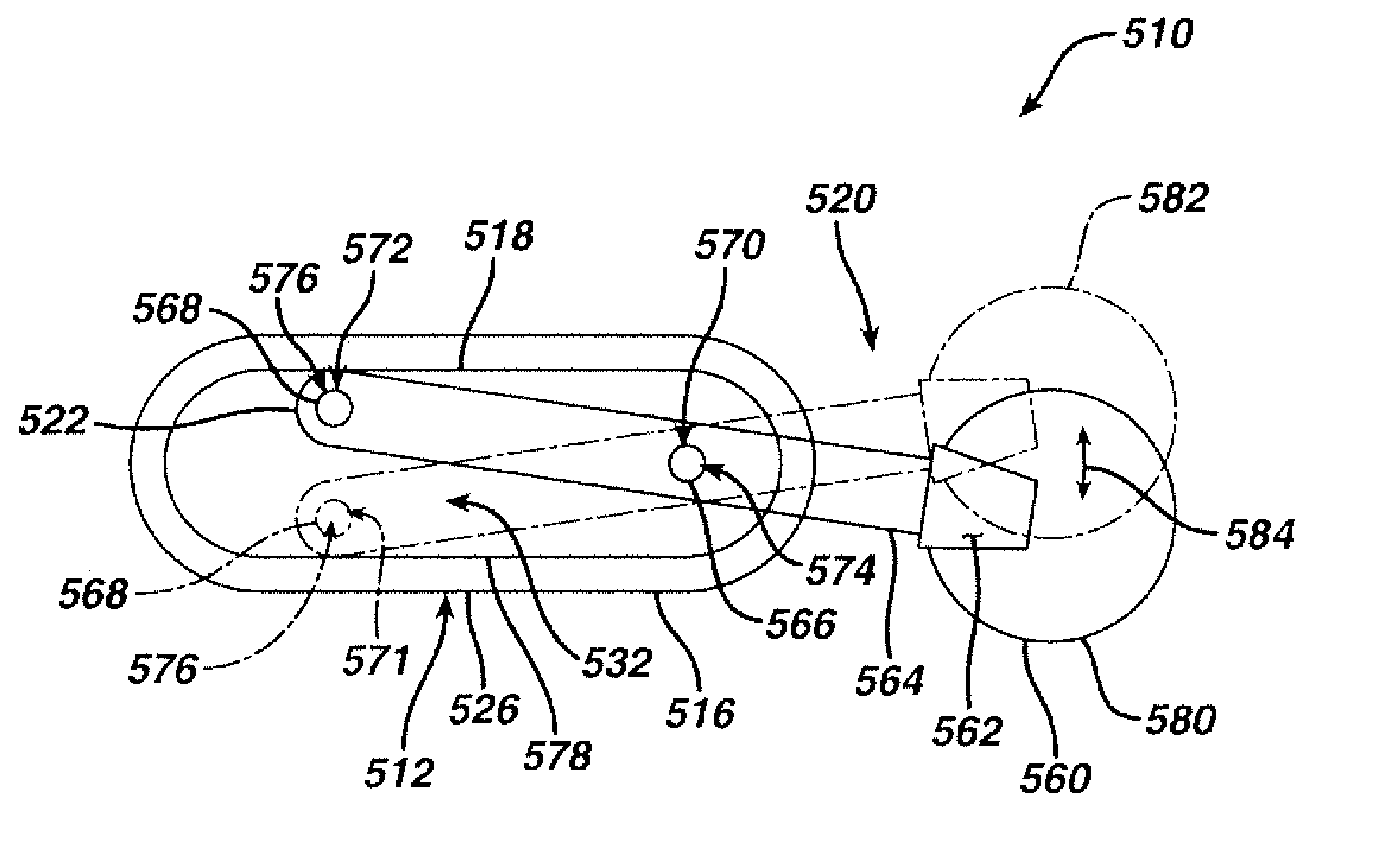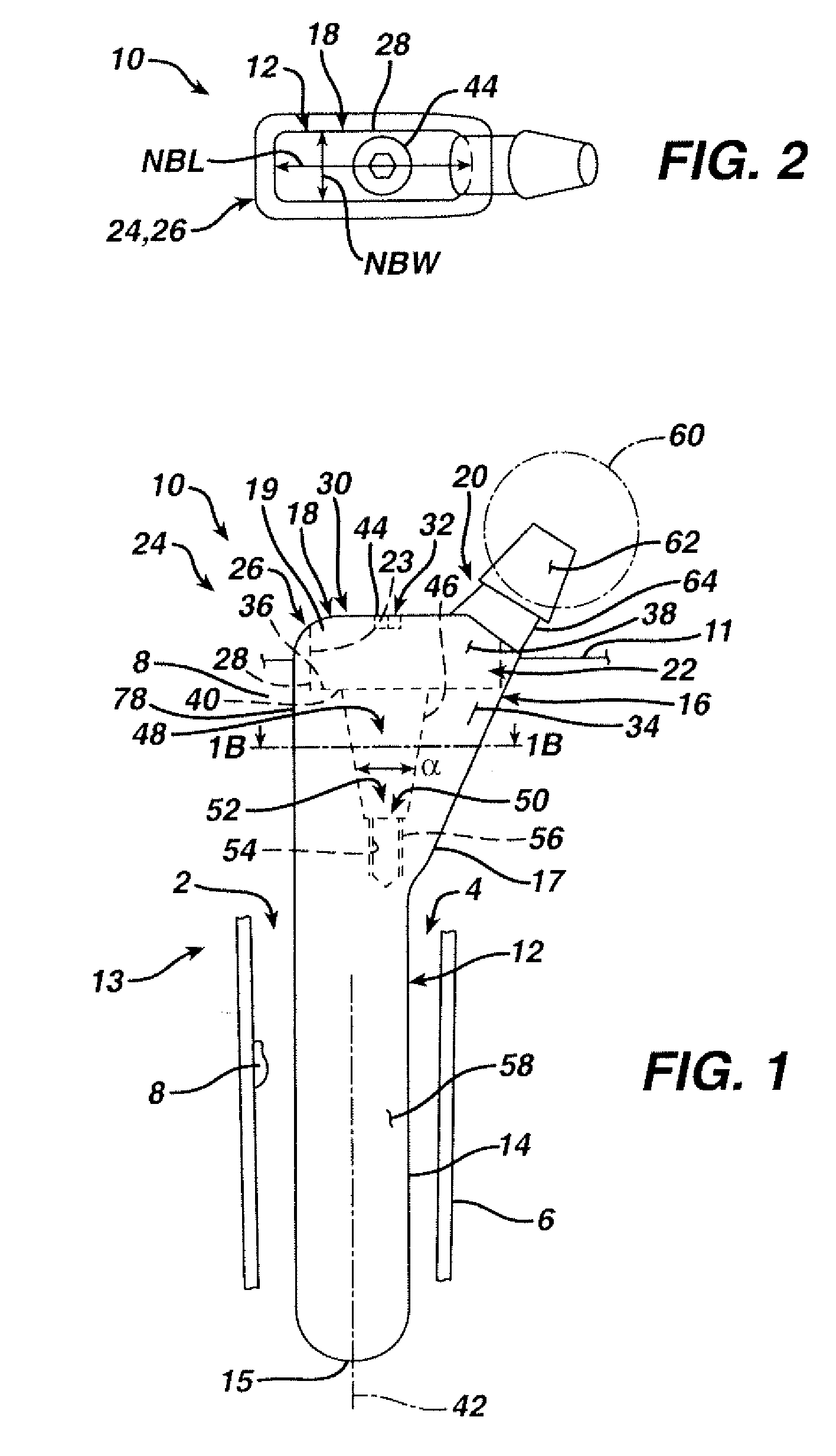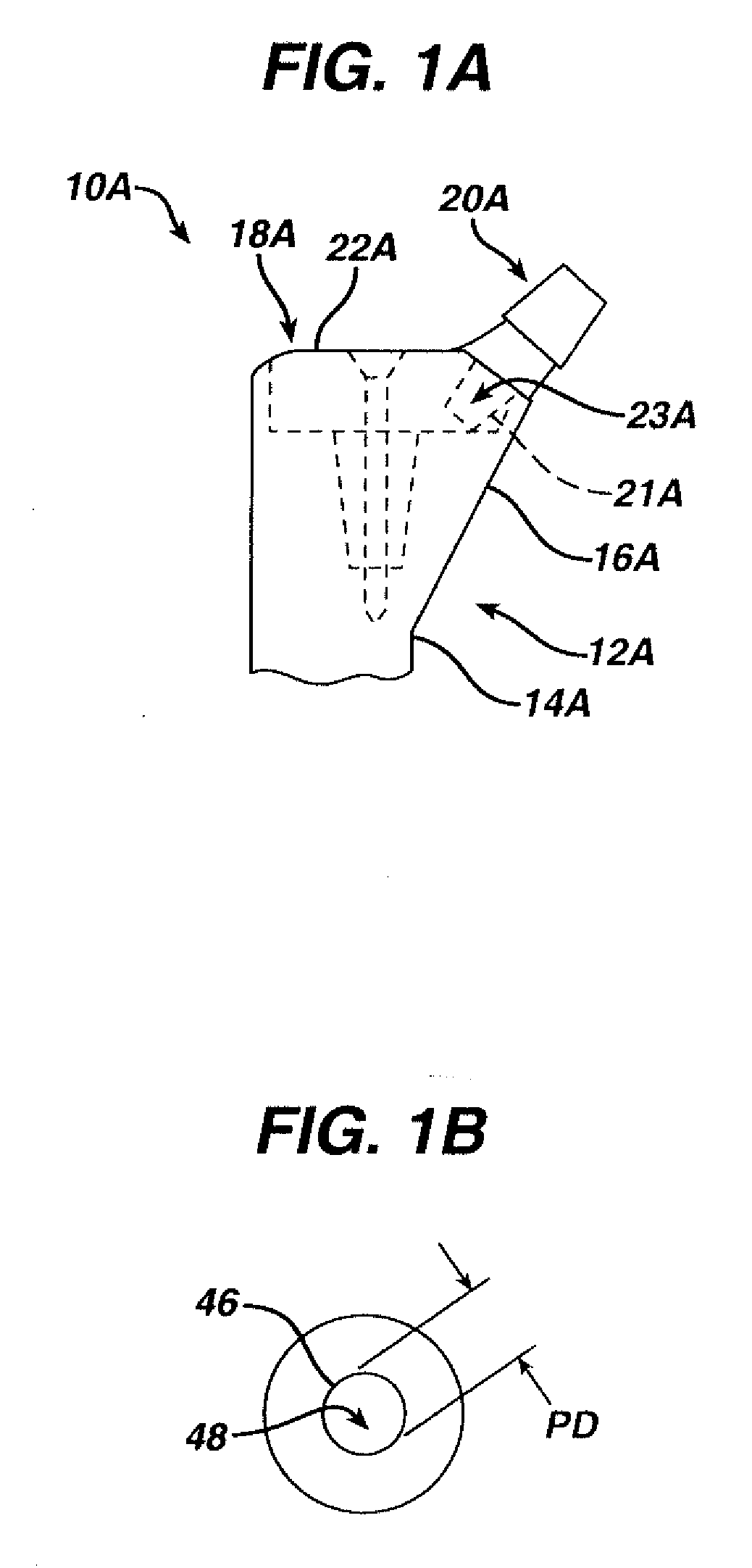Orthopaedic implant kit, orthopaedic surgery kit and associated method
a technology for orthopaedic surgery and implant kits, applied in the field of orthopaedics, can solve the problems of inability to fix the stem, difficult to achieve the effect of avoiding the need to disturb the fixation of the stem, and reducing the risk of fractur
- Summary
- Abstract
- Description
- Claims
- Application Information
AI Technical Summary
Benefits of technology
Problems solved by technology
Method used
Image
Examples
Embodiment Construction
[0089] Embodiments of the present invention and the advantages thereof are best understood by referring to the following descriptions and drawings, wherein like numerals are used for like and corresponding parts of the drawings.
[0090] According to the present invention and referring now to FIG. 1, an embodiment of the present invention is shown as hip stem 10. Hip stem 10 is utilized for performing hip arthroplasty. The hip stem 10 is designed to be fitted into a cavity 2 in the canal 4 of a long bone 6, for example, the femur. The hip stem 10 includes a stem component 12 including a distal stem portion 14 and a proximal body portion 16. The hip stem 10 further includes a neck component 18 which, is as shown in FIG. 1, is fixedly connectable to the stem component 12. The neck component 18 includes a proximal neck portion 20 and a distal body portion 22. The neck component 18 is adapted for removal from the femur 6 without disruption of bone 8 around the stem component 12.
[0091] To...
PUM
 Login to View More
Login to View More Abstract
Description
Claims
Application Information
 Login to View More
Login to View More - R&D
- Intellectual Property
- Life Sciences
- Materials
- Tech Scout
- Unparalleled Data Quality
- Higher Quality Content
- 60% Fewer Hallucinations
Browse by: Latest US Patents, China's latest patents, Technical Efficacy Thesaurus, Application Domain, Technology Topic, Popular Technical Reports.
© 2025 PatSnap. All rights reserved.Legal|Privacy policy|Modern Slavery Act Transparency Statement|Sitemap|About US| Contact US: help@patsnap.com



